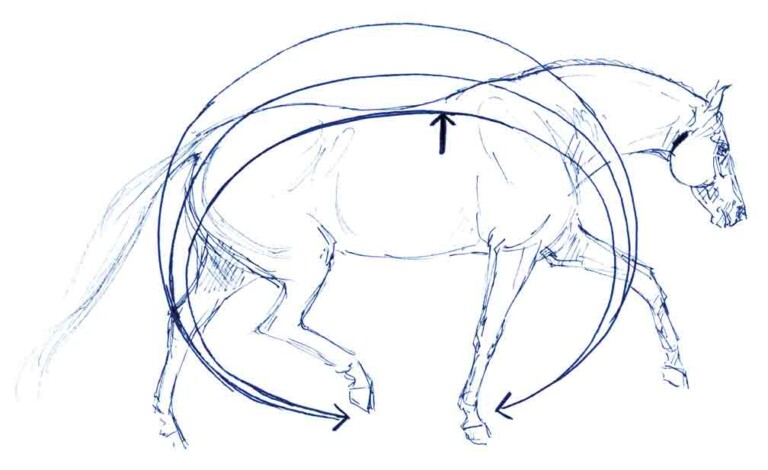Needs more impulsion is a frequently written note on dressage test sheets. But more impulsion does not mean faster. Christine Armishaw delves into what is it you are trying to achieve to capture better marks.

What is Impulsion?
In a nutshell, impulsion is more energy from the hindquarters, the vigour and power that is produced from the backend. A horse showing good impulsion moves in a powerful, athletic way, showing both elastic and expressive movement.
For example, in regard to the impulsion component of a working trot, to earn an excellent score of 10 the horse is required to display energetic, active steps with engaged hind legs. The hind feet should reach forward, touching the ground in front of the hoofprints left by the forefeet, for the duration of the working trot.
When Can Impulsion be Seen?
Impulsion, only seen in the paces that have a moment of suspension, can be likened to horse airtime. To actually see impulsion, in say a trot or canter, you are looking for the length of time the horse spends in the air, rather than on the ground. The horse is said to be displaying good impulsion when that moment of suspension is more noticeable.
How Speed Impacts Impulsion?
If, while seeking impulsion, the rider pushes the horse forward to the point that it quickens its steps, rather than pushing powerfully up and forward, speed is discovered instead. Being the opposite of suspension, speed can be described as a flattening of paces, because the time the horse’s feet are spent in the air is reduced. Stay tuned for part two to learn the secret to better impulsion.
Stay tuned for part two to learn the secret to better impulsion.



